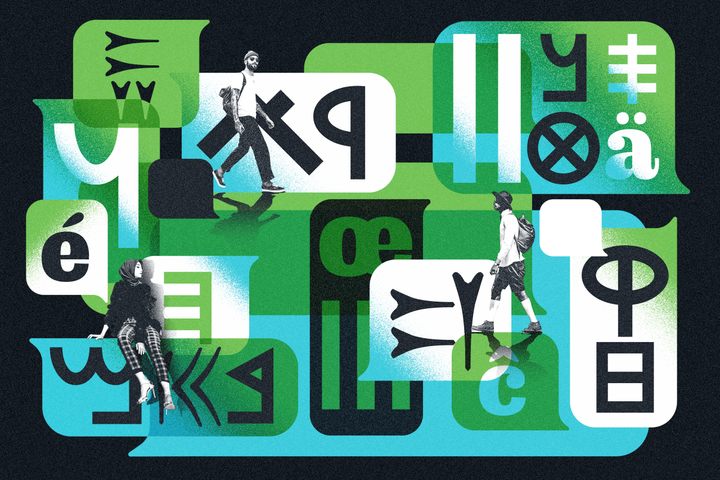
Puzzle Monday: Deciphering Ireland’s Ancient Standing Stones
Among our crosswords and other puzzles, we’ll be featuring linguistic challenges from around the world from puzzle aficionado and writer Alex Bellos. A PDF of the puzzle, as well as the solution, can be downloaded below.
If ever an alphabet could be described as “edgy,” it would be Ogham, the ancient script that appears on stone monoliths in Ireland dating to between the fifth and seventh centuries.
The script was originally comprised of indentations and tally marks that run up the edges of standing stones. Each Ogham letter is either a series of notches on the edge, or a series of short strokes extending from the edge onto one side or both.
When Ogham was later written down—it appeared in manuscripts a few hundred years after the last known standing stone—the edge was drawn as a horizontal line, with either dots on it, or short lines attached. The alphabet’s distinctive appearance and its link to ancient Irish history has made it a popular design feature in modern Irish decorative arts such as jewelry and tattoos.

About 330 Ogham monoliths survive, mostly in Ireland, with a few in the western parts of Great Britain. The largest collection on open display is the Stone Corridor, a museum that contains 27 standing stones, at the National University of Ireland in Cork. There are also bilingual Ogham-Latin stones in Britain. Those, combined with the later manuscripts, make Ogham readily readable today.
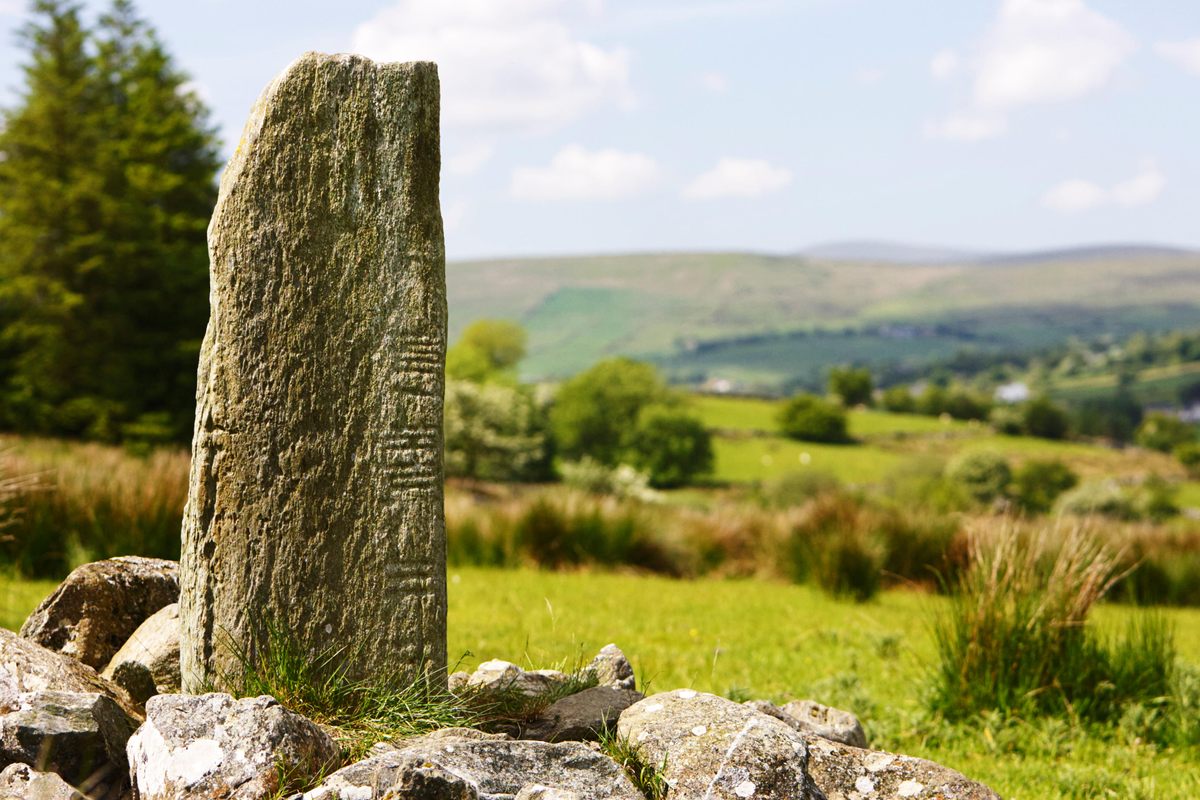
The inscriptions on Ogham stones are names—meaning the stones were probably tombstones, cenotaphs, or statements of land ownership—sometimes with an indication of parentage or tribal affiliation. For example, one reads “Grilagnas, son of Scilagnas,” another “Catuviras, son of Ritavix of the tribe of Allatis.” Since none of the names (with one possible exception of a king in Wales) are known from the historical record, it is impossible to accurately date them. Nor is it possible to locate their place of origin, since many stones had second lives as building material in medieval and modern homes. Some monoliths were abandoned in ditches, some used as rubbing posts for cattle, and one was used as a kneeling stone at a well.
In the 19th century, many scholars promoted the view that Ogham was evidence of a learned class of pagans and druids that existed in Ireland before the arrival of Christianity in the fifth century. Damian McManus, professor of Early Irish at Trinity College, Dublin, rejects these claims. He believes it more likely that Ogham was created as a vehicle for the writing of the Irish language, most probably inspired by (but not based on) the Latin alphabet and using a tally system of notation.
Even so, modern-day pagans continue to believe in the mystical importance of Ogham and use the letters for divination and decoration.
Ogham script has 20 characters, with each character each representing a sound, strung together on the central line. It was read from the bottom of the standing stone to the top and sometimes around the top and back down the other side.
The Auraicept na n-Éces, a poets’ primer that dates from at least as far back as the 12th century, gives a Biblical explanation of the origins of the Irish language and Ogham script, stating that they were created from the best of every other language, specifically for the use of scholars. “Propaganda, no doubt,” McManus says in a booklet he wrote for Cork University. “We will probably never know exactly when, where, or why this peculiar script and its unique alphabet were devised, nor what inspired them, but we do know that from the Old Irish period (seventh to ninth centuries) until the demise of the native schools of Classical Modern Irish (17th century), the Ogham system was the framework for the study of Irish letters and was regarded as uniquely Irish.”
Ogham is the oldest written source of the Irish language, and marks the beginning of Irish scholarship and learning. It is also very much at the forefront of current research into ancient Irish history. The Ogham in 3D project aims to digitize every Ogham stone using laser scanning technology to create a database in which scholars can rotate the stones to properly read the writing down the edges. More than 150 stones—about half of the total known stones—are already available to read.
Our puzzle, which involves deciphering the Old Irish names of various native plants, is below.
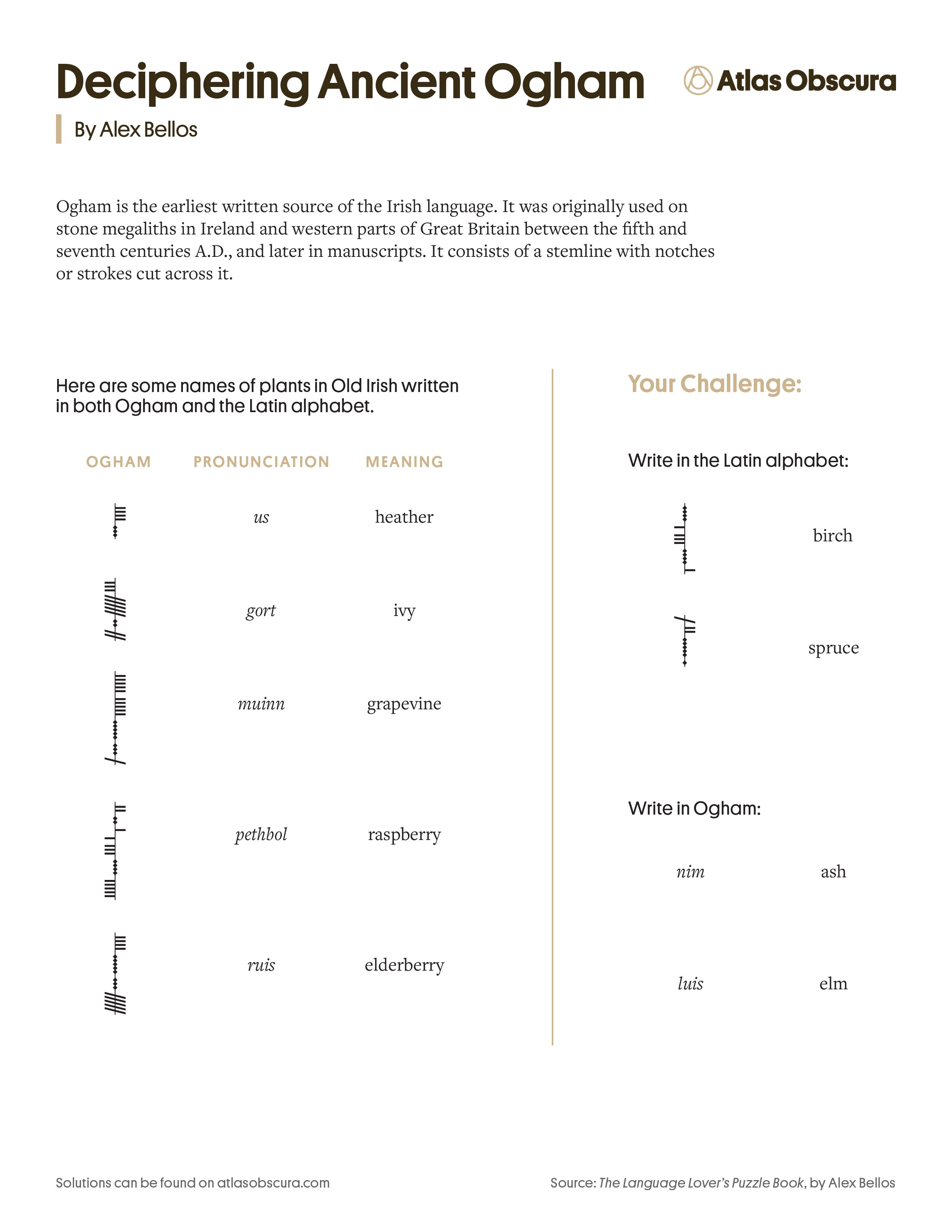
Stumped? Download the solution!
Source: The Language Lover’s Puzzle Book, by Alex Bellos
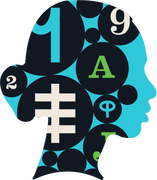
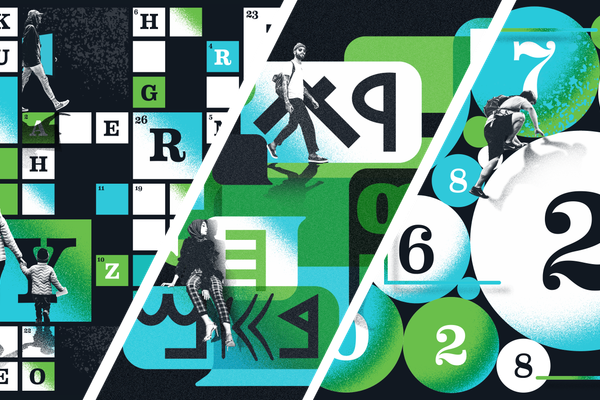







Follow us on Twitter to get the latest on the world's hidden wonders.
Like us on Facebook to get the latest on the world's hidden wonders.
Follow us on Twitter Like us on Facebook